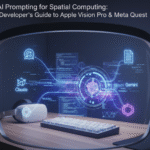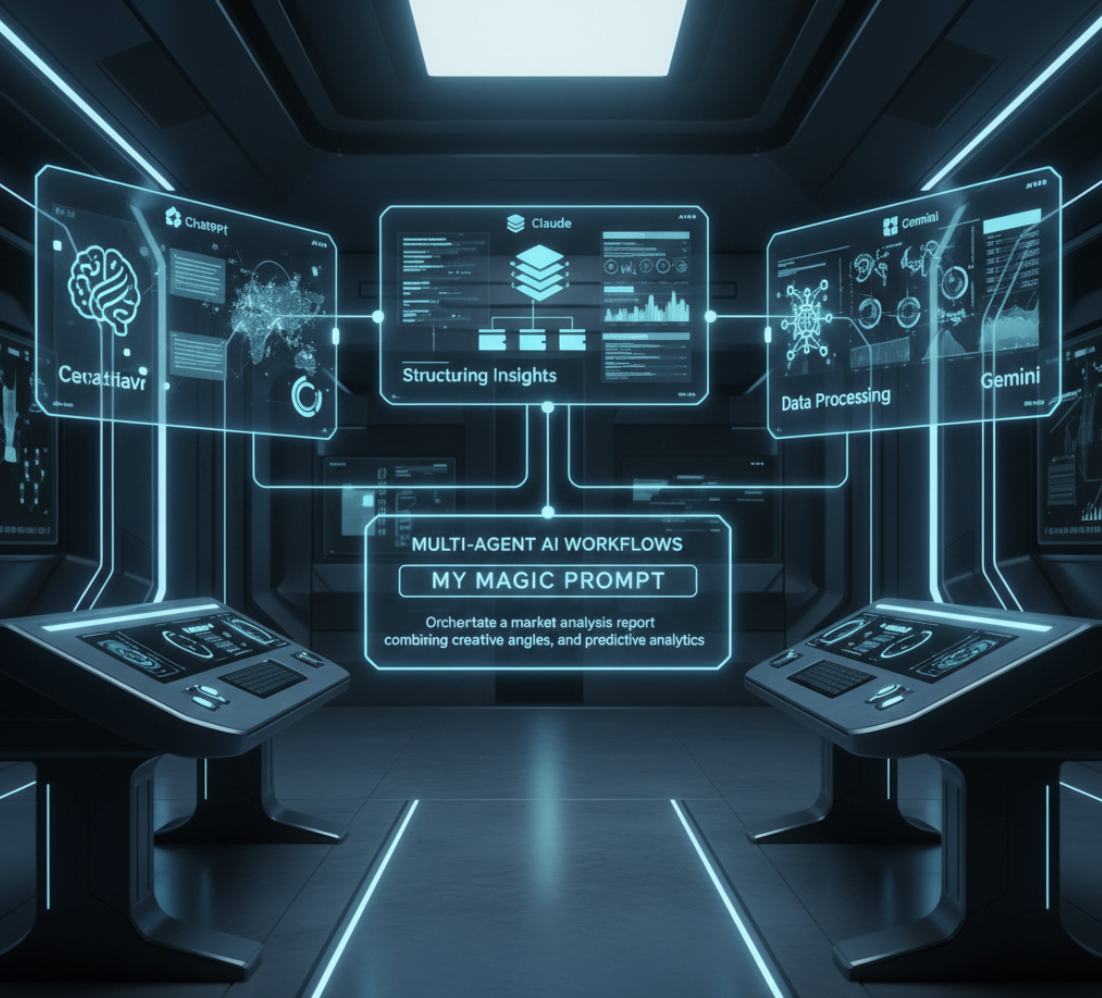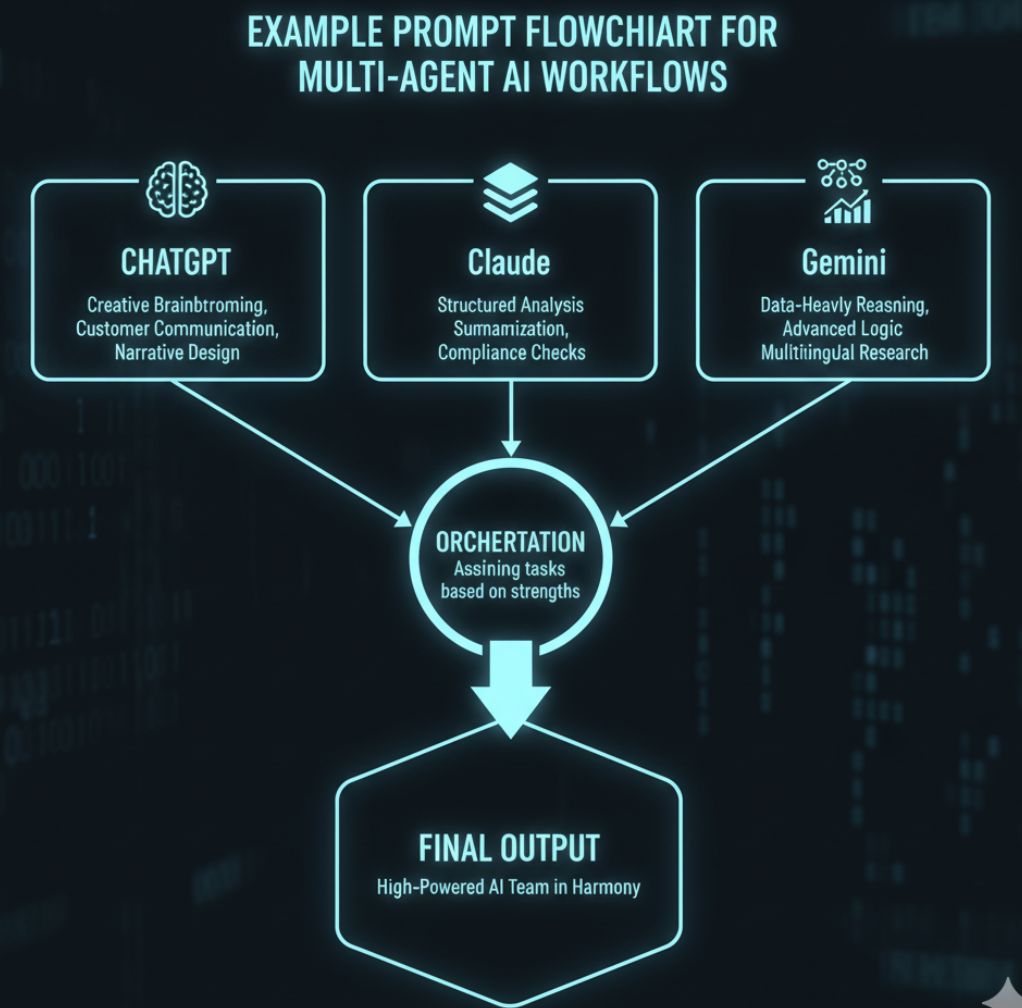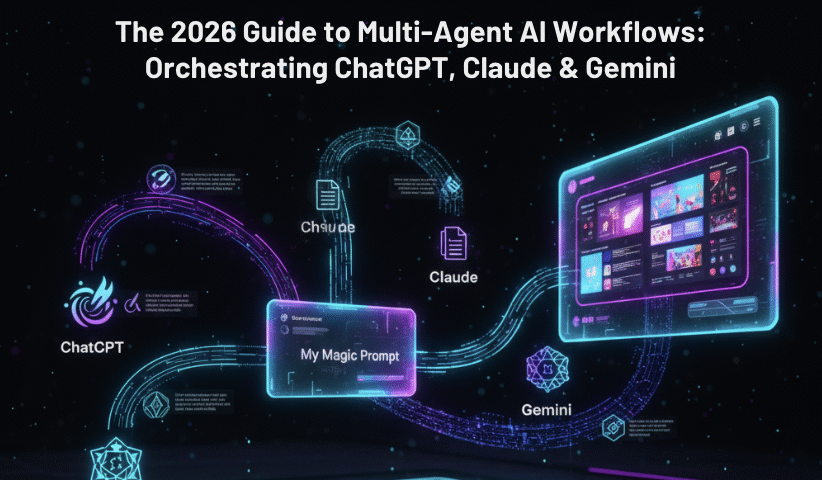
The AI Prompt Playbook for Startup Founders: Launch Smarter, Build Faster, and Validate More with Less
August 4, 2025
AI Prompting for Spatial Computing: A Developer’s Guide to Apple Vision Pro & Meta Quest
October 6, 2025Introduction: Why Multi-Agent AI Matters in 2026
If you’ve ever wished your AI tools could “talk to each other” to solve problems faster, you’re not alone. Productivity-minded professionals in 2026 are realizing that the real magic of AI isn’t just in a single model like ChatGPT or Claude—it’s in orchestrating multi-agent AI workflows. When ChatGPT handles creative ideation, Claude structures insights with clarity, and Gemini crunches data at scale, the result is a high-powered AI team working in harmony.
But here’s the challenge: coordinating these models effectively requires smart prompting and workflow design. That’s where My Magic Prompt steps in—helping you streamline, structure, and optimize multi-agent interactions with powerful prompt templates and automation features.

What Are Multi-Agent AI Workflows?
A multi-agent AI workflow is the process of orchestrating multiple AI systems (agents) to work together toward a single outcome. Instead of relying on one model for everything, you assign tasks based on each model’s strengths:
- ChatGPT → Creative brainstorming, customer communication, narrative design
- Claude → Structured analysis, summarization, compliance checks
- Gemini → Data-heavy reasoning, advanced logic, multilingual research
This division of labor mirrors how you’d assign roles within a human team.

Why Multi-Agent AI Workflows Are a Game-Changer
In 2026, the best productivity setups aren’t about one super-tool—they’re about how you combine AI models strategically. Benefits include:
- Higher accuracy: Each model plays to its strengths.
- Faster turnaround: Tasks run in parallel rather than sequentially.
- Reduced cognitive load: You’re not forcing one AI to “do it all.”
- Scalable complexity: From writing technical docs to conducting due diligence, multi-agent setups scale with your needs.
According to Harvard Business Review, companies leveraging multiple AI systems in collaboration see significant productivity gains and better decision-making quality.
Framework: Designing Your Multi-Agent AI Workflow
Here’s a simple step-by-step framework you can use:
- Define the goal → What’s the outcome? (e.g., investor report, market analysis, campaign brief)
- Assign roles → Which AI agent does what?
- ChatGPT for ideation
- Claude for structure
- Gemini for logic & data
- Create prompts → Write prompts tailored to each model’s strength.
- Sequence or parallelize → Decide if agents should work in order or simultaneously.
- Integrate & refine → Merge outputs, validate, and improve.
💡With My Magic Prompt, you don’t need to reinvent the wheel—you can access pre-built prompt templates that are optimized for multi-agent orchestration, helping you save time and avoid trial-and-error.
Example: A Multi-Agent Workflow in Action
Imagine you’re building a startup pitch deck:
- ChatGPT: Generates storytelling hooks and creative angles.
- Claude: Structures slides into logical sections and ensures compliance.
- Gemini: Provides financial forecasting and competitive data.
Together, this produces a polished deck in hours, not weeks.
Best Practices for Multi-Agent AI Workflows
To maximize your results:
- Be specific in prompts → The clearer the role, the better the output.
- Use a central hub → My Magic Prompt’s prompt builder helps you keep track of instructions for each model.
- Iterate quickly → Test, refine, and rerun prompts to improve outputs.
- Document workflows → Save winning combinations as templates for future use.
Check out My Magic Prompt’s Chrome Extension to manage and organize prompts directly in your browser.
FAQ: Multi-Agent AI Workflows
1. What’s the difference between multi-agent AI and using a single AI model?
Single models try to handle everything, while multi-agent workflows assign specialized tasks to different AIs, leading to better outcomes.
2. Can I run ChatGPT, Claude, and Gemini together easily?
Yes—with prompt orchestration tools like My Magic Prompt, you can build structured workflows that coordinate between them.
3. What’s an example of a bad prompt in multi-agent workflows?
A vague prompt like “Do market research”—it lacks structure. A better prompt assigns scope: “Claude, summarize competitor reports in 500 words. Gemini, provide growth projections.”
4. How do I keep track of multiple prompts?
Use a prompt library. My Magic Prompt offers built-in organization so you don’t lose winning prompt structures.
5. Do I need coding skills to build multi-agent workflows?
No. With modern tools, workflows can be managed through prompt templates and drag-and-drop orchestration.
Final Thoughts: Orchestrating Smarter AI Teams
The future of productivity isn’t just about “using AI”—it’s about orchestrating AI teams. Multi-agent AI workflows give you the ability to combine ChatGPT’s creativity, Claude’s clarity, and Gemini’s intelligence into one powerhouse system.
✨ If you want to start building your own multi-agent setups without overwhelm, explore My Magic Prompt — your toolkit for smarter prompting, templates, and AI orchestration.

